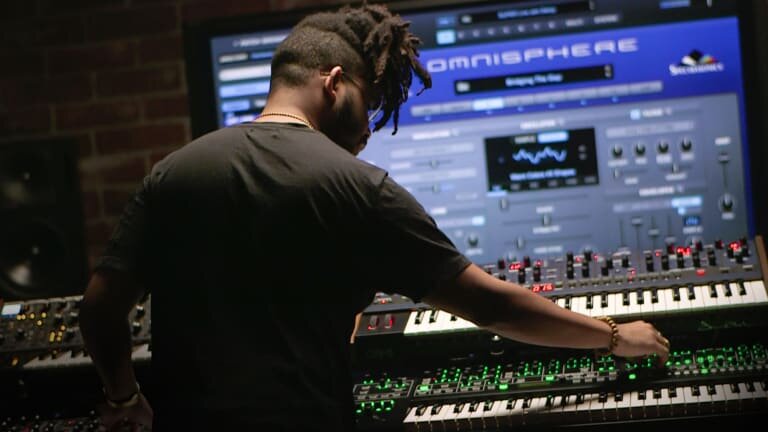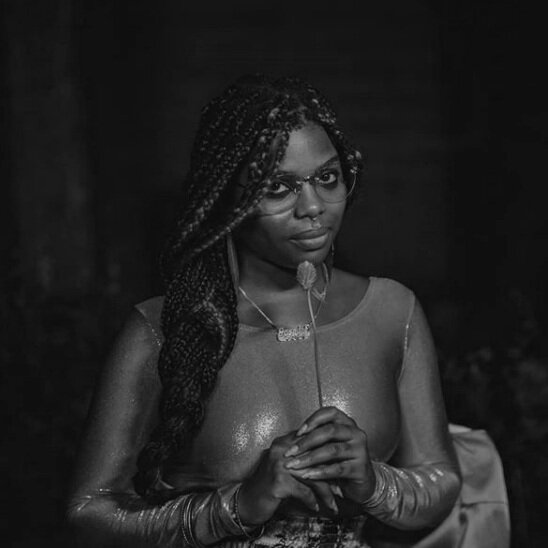What’s the Difference Between a Producer and Sound Engineer?
When it comes to creating songs, while most (if not all) the credit is given to singers and songwriters, producers and engineers are an often overlooked piece to the puzzle.
Photo via infamousmusician.com.
At the most basic level, producers oversee aspects of the creation of a song or album.
Production is the “missing ingredient that allows ideas to flow,” Otto Botté (Nacor Zuluaga) said. Otto Botté is a producer, sound engineer, and musician.
The missing ingredients can include choosing the songs, musicians, instruments, and/or vocalist(s), as well as deciding how those instruments are played, how the notes are sung, and where the music will be recorded. Producers may gather musical ideas, co-write, and collaborate with artists to help them improve their work.
Some producers maintain that beatmakers — those who solely work on computers, and sometimes referred to as “bedroom producers,” — are not actual producers. Producer Dear Pricey says beatmaking may be a great place to flesh out ideas and get started with music, but ultimately, there’s not as much longevity in solely making beats, especially if you don’t truly understand the craft of being a producer. “Are you in it for today or are you in it for tomorrow?” Dear Pricey said.
Santana Sankofa is a singer and founder of Downbeat Collective, a music production workshop that introduces Bronx youth to skilled producers and music-making. They said being a producer is a collaborative process, whereas being a beatmaker is a solo endeavor. In an oversaturated market, it’s easy for a beatmaker to be seen as “disposable.”
Since many producers don’t have the time or resources to get into a studio, they may somewhat (or entirely) rely on digital audio workplaces, or DAWs, which are computer software such as Apple’s Logic and Avid’s Pro Tools. These platforms are practical and reliable industry standards. However, others don’t want to rely solely on DAWs; the sound from samples gets smaller and flatter with each use, since they’re not live recordings. Otto Botté believes that if you rely solely on computer-generated music, you don’t have the “true essence of the sound … just the representation,” and that the “representation is the loss of quality.” It’s very similar to recording over VHS tapes multiple times: the quality will suffer.
Photo via spectrasonics.net.
Top of the line companies such as Omnisphere, Native Instruments, Arturia’s V Collection, and Keyscapes emphasize live recordings, and then emulate those sounds…for a price. Their equipment is within the $500+ range. Higher quality equipment may range in the hundreds of thousands, so many producers who are just starting out make do with what they can.
Producers may also use audio interfaces, which are boxes that convert digital-to-analog, and analog-to-digital. Industry standards such as UAD’s Apollo Twin, Steinbergs UR RT4, and the Scarlet i2i can run between $400-$600. Bluebird microphones are crisp, and they’re able to pick up most sounds.
Good producers strive to understand every phase of production.
They’ll have a strong ear, and a well-rounded knowledge of how voices and instruments work together to produce a recordable sound. It’s about understanding people’s vision, and leaving one’s ego out of the room.
A producer must also be able to see the bigger picture, and create an environment that allows for an artist’s vulnerability and creativity to come through. They also need to hold the artist accountable for their vision. All of this comes from experience.
They also understand that, while they may have their own notes on what needs to be done or what could be improved upon, it is ultimately up to the artist to implement those ideas. Santana recalls an experience where producers gave them notes on a project that would completely change the sound and the direction, which they didn’t like. They will sit with the artist and get to know as much about them as possible, which helps them create their vision of the song or album.
Many competing elements go into the creation of a song or album; strong producers and engineers have an intentional hand in the process. Engineers wear a multitude of hats, and may help produce a recording or a live performance, balancing and adjusting sound sources using equalization and audio effects, mixing, and reproduction. They also help set up microphones and soundchecks.
Photo via wallpapersafari.com.
You can get a degree or certification in audio or sound engineering at a university, but many are self-taught and received lengthy on-the-job training.
A good audio engineer must possess solid knowledge of audio engineering principles and techniques, how to position instruments and equipment to get the best quality recordings, and be a quick problem solver with a high level of creativity. Pricey says if an artist wants to record three or four songs in an hour, a good engineer will make this happen.
While there are a handful of colleges and universities throughout the country that offer degrees in sound engineering, they tend to have high dropout rates. An average class has 10-15 students. A single professor cannot adequately mentor and provide enough attention to each one. Classes ‘re also expensive. Many prefer working as an apprentice or through a mentorship. Otto Botté became an engineer through a two-year mentorship at a recording studio in New York City.
Mixing combines the instruments recorded into a stereo 2-track mix. A good mixing engineer ensures all instruments are clearly heard with both depth and motion. The end result should support the intention of the music. Since many songs or albums use multiple mixers, the job of the master is to make all songs sound the same and even. Mixing involves using compressors (to make the sounds consistent), equalizers (controls the “brightness” of sounds), limiters (controls the volume), and denoising tools (gets rid of the hisses, hums, and clicks).
A mastering engineer takes what the mixing engineer(s) has done and beautifies the process according to what the world wants to hear. They make sure that the lows, mids, and highs are all on point and sound good on all devices. If there are any inconsistencies, their job is to be creative with these limitations. At the core, engineers take a holistic approach to developing and finalizing music using any tools they have at their disposal.



